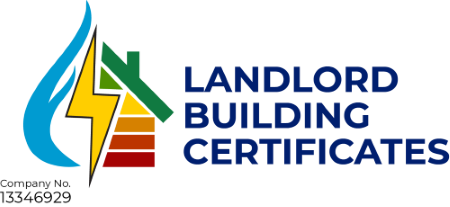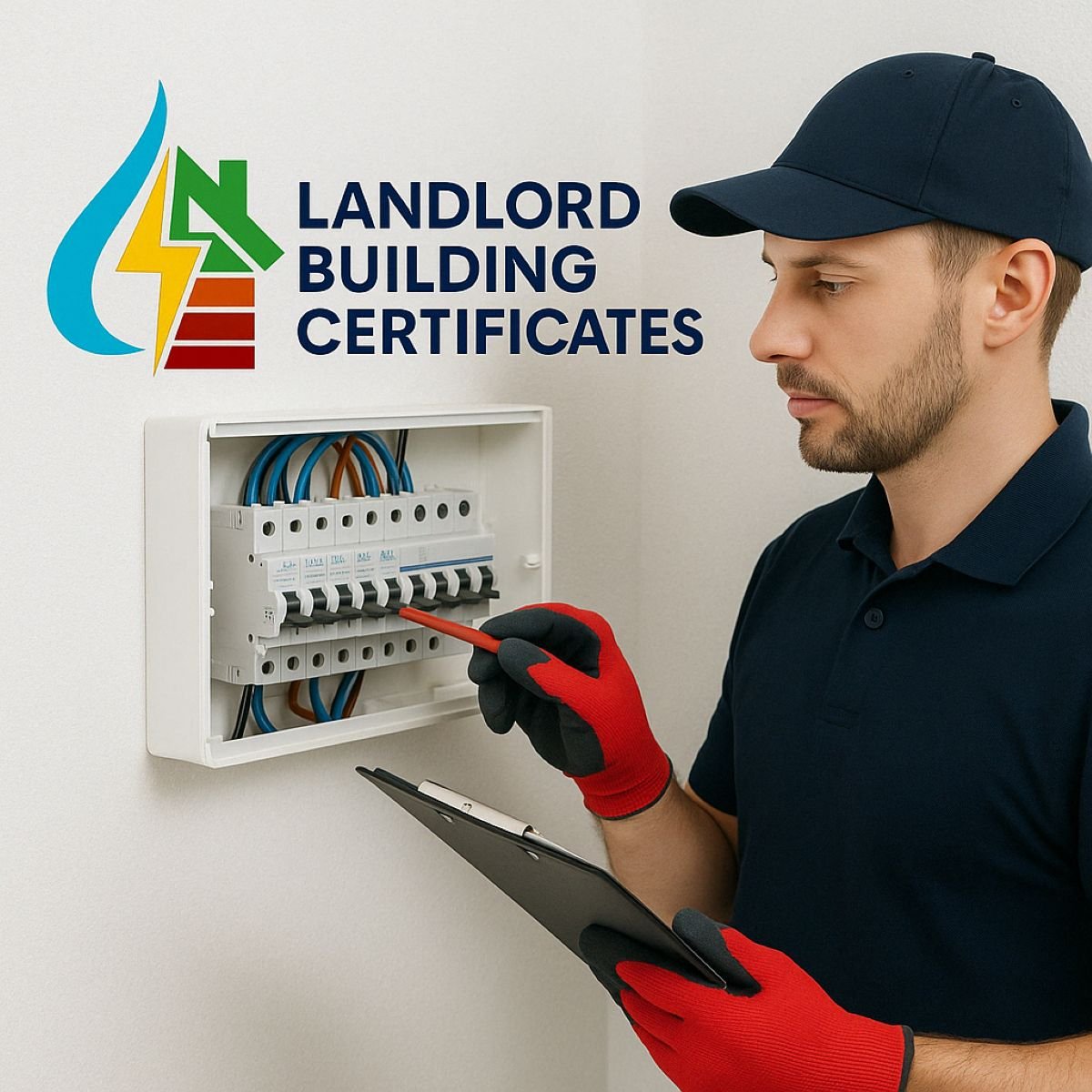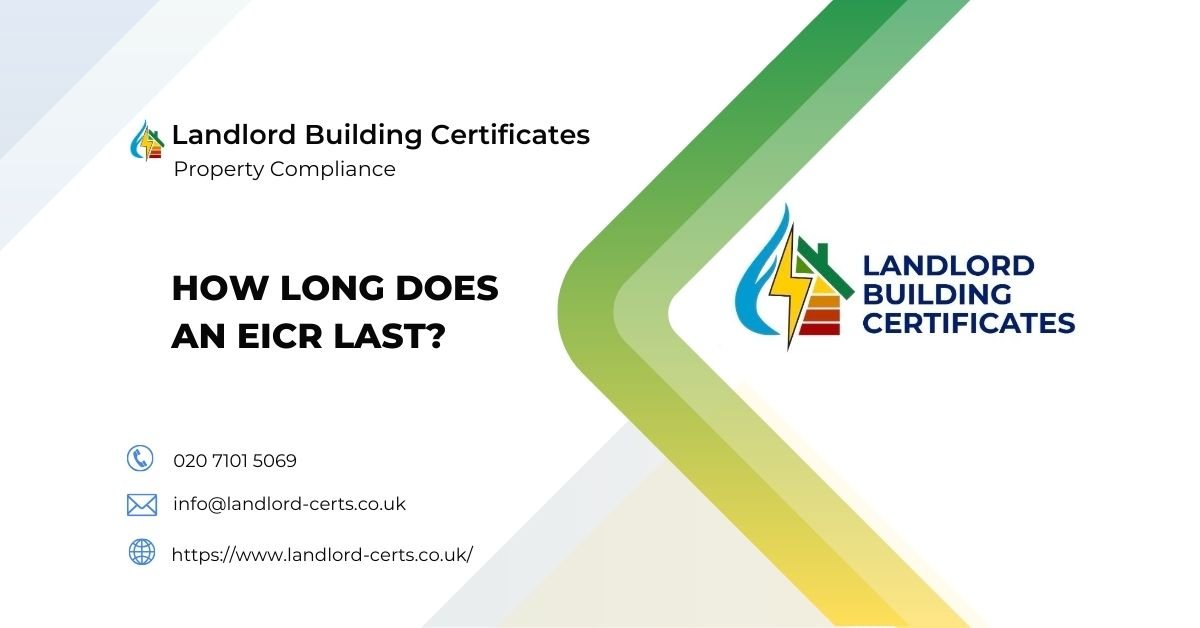How long does an EICR last in the UK?
An Electrical Installation Condition Report, or EICR, typically remains valid for five years if you are renting out a property in the UK. This duration aligns with the Electrical Safety Standards in the Private Rented Sector Regulations 2020. The report checks the condition of fixed electrical installations and ensures they meet the current British Standard, BS 7671. For homeowners, a ten year inspection cycle is recommended unless the installation condition or usage calls for more frequent testing. High risk environments, such as properties with swimming pools or commercial kitchens, require more regular assessments.
Here's What We Have Covered In This Article
Why electrical inspections matter for landlords
EICRs are more than a compliance tick box. They help landlords identify deteriorating wiring systems, outdated consumer units, and overloaded circuits before these faults lead to electric shocks or electrical fires. Conducting periodic inspections provides assurance that the property is safe for tenants and helps avoid financial and legal complications later.
What is an EICR?
Purpose and scope
An Electrical Installation Condition Report is a formal document produced by a qualified electrician after inspecting and testing the fixed electrical systems within a property. This includes circuits, sockets, light fittings, earthing systems, fuse boards, and wiring. The report determines if the system is safe to use and complies with the current edition of the wiring regulations.
Conducting an EICR
Only a certified electrician registered with a body such as NICEIC or NAPIT should carry out an EICR. They use specialist test instruments to measure circuit continuity, insulation resistance, polarity, and earth loop impedance. Visual checks identify damaged equipment or signs of poor installation.
Do landlords need to get an EICR?
Legal obligations under the 2020 regulations
If you let out a property in England, you are legally required to have a valid EICR every five years. The regulation applies to new and existing tenancies and aims to improve residential electrical safety. Letting agents and landlords must ensure that the inspection is completed by a qualified person and that any necessary remedial work is done within the timeframe specified in the report.
Document handling and sharing
Landlords must:
-
Provide tenants with a copy of the EICR within 28 days of the inspection
-
Offer new tenants a copy before occupation
-
Submit a copy to the local authority within seven days if requested
-
Keep a copy for future inspections and proof of compliance
Further details on landlord safety responsibilities are available in our guide to property compliance certificates.
How long does an EICR last for different property types?
Rental properties
The standard validity is five years from the date of issue. However, the electrician may recommend a shorter duration based on the condition of the installation.
Owner occupied homes
Although not a legal requirement, EICRs are advised every ten years. Situations such as recent refurbishment, reported faults, or selling the property may warrant an earlier check.
Commercial and industrial premises
Commercial premises such as offices, retail units, and factories generally follow a five year inspection schedule. However, environments exposed to high moisture or heat levels such as laundries or kitchens may require checks every one to three years.
What factors could reduce the validity of an EICR?
Electrical upgrades or changes
Any significant modifications to the installation, such as fitting a new distribution board or adding circuits, should be followed by a new inspection to verify continued safety.
Property usage and age
The frequency of inspections may increase for older properties with original wiring, or those heavily used such as houses in multiple occupation (HMOs). These factors affect wear and stress on the system, increasing the risk of failure.
Faults and system behaviour
If circuit breakers frequently trip or tenants report flickering lights or buzzing sockets, these may signal underlying faults. In these cases, landlords should arrange for a fresh EICR regardless of how long the current certificate has left.
What happens if an EICR is unsatisfactory?
Understanding the coding system
The report uses standard codes to highlight problems:
-
Code C1 indicates immediate danger requiring urgent action
-
Code C2 means the system is potentially dangerous and needs improvement
-
Code C3 suggests improvements are recommended but not mandatory
-
FI means further investigation is required to determine safety
Follow up and documentation
Where the report indicates a C1 or C2 issue, landlords must carry out remedial work within 28 days or sooner if specified. Once completed, written confirmation from the electrician or a Minor Works Certificate should be kept alongside the EICR.
More guidance on electrical safety is available on the Electrical Safety First website.
Protect Your Property and Your Business
Avoid fines and keep your tenants safe. Let us manage your electrical compliance and scheduled inspections.
Why it is important to stay compliant
Financial and legal consequences
Failing to provide a valid EICR can lead to penalties of up to £30,000. Local authorities are empowered to enforce the regulations and can issue fines or take further action in serious cases.
Insurance implications
In the event of a fire or injury, lack of an up to date EICR could invalidate landlord insurance. Insurers may argue that you have not met your duty of care if safety inspections have been missed.
Safety and tenant wellbeing
Faulty electrics are a leading cause of house fires in the UK. Regular inspections ensure hidden dangers are caught early. This protects lives and reduces the likelihood of costly repairs.
What does an EICR cost and how can you prepare?
Pricing overview
Most EICR inspections cost between £125 and £300 depending on the size and layout of the property. Properties with more circuits or complex layouts usually cost more.
Preparing for the inspection
To ensure a smooth inspection:
-
Make sure all electrical installations are accessible
-
Inform tenants ahead of time
-
Repair obvious faults like loose sockets or damaged light switches beforehand
Being prepared helps reduce the time needed for the assessment and may improve the report outcome.
Need to Book a Commercial EICR?
Ensure your building stays compliant and safe. We work with NICEIC-approved electricians across the UK to deliver certified inspections.
How can landlords keep track of EICR expiry dates?
Manual records and calendars
Mark inspection dates on a calendar or keep a spreadsheet to avoid missing renewal deadlines. This is particularly useful for landlords managing multiple properties.
Digital solutions
Property management platforms like Goodlord or Safe2 provide reminders and centralised storage for EICRs and other certificates. These services help landlords maintain compliance and provide documents quickly when needed.
Using digital tools reduces the risk of errors and keeps paperwork organised.
Regional differences across the UK
Scotland, Wales and Northern Ireland
Electrical safety rules vary slightly across the UK. Scotland already enforces similar EICR requirements under the Housing (Scotland) Act. Wales and Northern Ireland follow guidance in line with BS 7671 but may not have identical enforcement timelines. Always check your local council guidance.
Are there future changes expected to EICR regulations?
Ongoing reviews
Regulations and safety standards are regularly reviewed. Updates to the IET Wiring Regulations can influence the frequency or content of EICR assessments. The government may also introduce new obligations for landlords as part of broader housing reforms.
Role of technology
Smart compliance tools and automated maintenance logs are likely to play a bigger role in helping landlords monitor electrical safety. These platforms support audit trails and offer real time alerts about certificate expiry dates.
Summary
EICRs play a key role in ensuring rental properties are safe and compliant. The certificate is valid for five years in most cases, though circumstances may shorten this. By using qualified professionals, carrying out timely repairs, and maintaining clear records, landlords can meet their legal obligations while creating a safer home environment for tenants. Staying organised and informed also protects against fines and potential insurance issues.
FAQs
1. Can an EICR last more than five years? In rare cases, the electrician may recommend a longer interval if the installation is new and in perfect condition. However, five years is the legal maximum for rental properties.
2. Do I have to share the EICR with tenants? Yes. Landlords must give the report to tenants within 28 days and to new tenants before they move in. The local council may also request a copy.
3. Is a previous owner’s EICR valid if I just bought a property? Yes, if the EICR is within its validity period and no changes have been made. Always check that any C1 or C2 issues were fixed.
4. What about commercial property? Offices and shops often follow a five year inspection schedule, but the electrician will recommend a suitable interval based on usage and environment.
5. How do I check if an electrician is qualified? Ask for proof of registration with an approved body such as NICEIC or NAPIT and confirm they are familiar with the latest edition of the wiring regulations.




